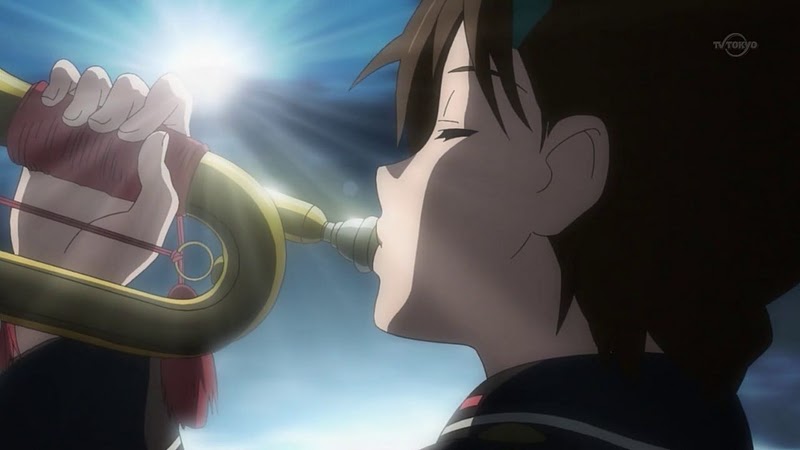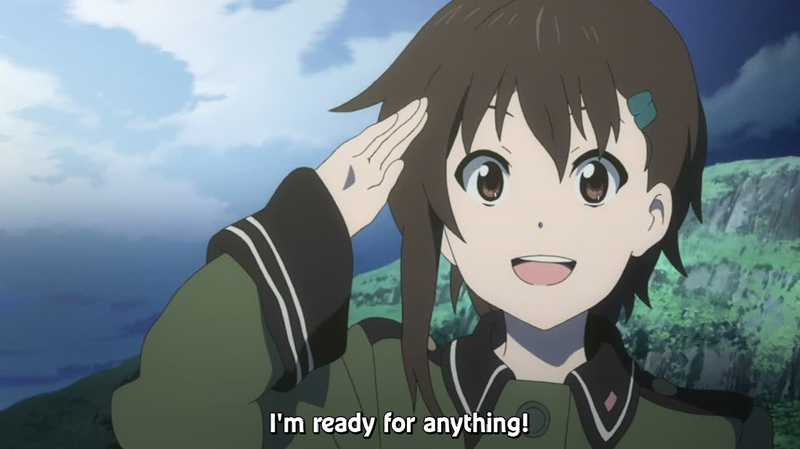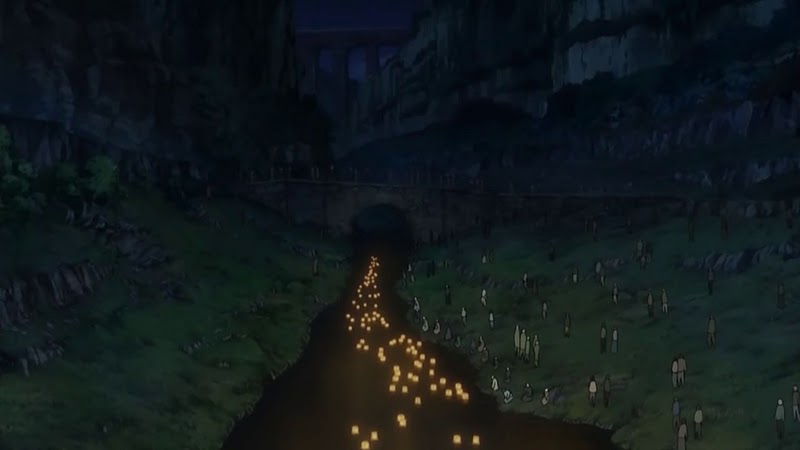This guest review was written by Scott Spaziani of the Otaku in Review blog. Check out his site here, and subscribe to his podcast here.
Sora No Woto is a series that attempted to unite the two feuding cults of anime fans by combining traditional moe elements with a serious and compelling storyline. The result is a story about a young girl, Kanata, who joins the army in order to learn to play music. She is assigned to a post in the most remote part of the nation and ends up living a life of leisure in a world that has been decimated by war.
Although the production values of Sora No Woto are extremely high overall, the show doesn’t have a single original idea. This is a show crafted by committee and it shows in the most obvious places. The character designs and personality types of the main cast seem to be lifted from other popular moe shows. The main character, Kanata, looks and acts like K-ON!‘s Yui Hirasawa, and even has same musical affinity. The technically inclined but soft-spoken and shy Noël Kannagi is, in personality and character design, an obvious rip off of Haruhi’s Yuki Nagato. There elements give the show an artificial feel and are an obvious attempt at pandering to moe fans.
Read more after the break.
The world these characters inhabit is vibrant and quickly becomes the most compelling aspect of the show. There is a mystery fueled by allusions to a great war, along with obvious clues that this fantastical world is, in fact, our own. The question that drives the show forward is “What happened in the past?” and that question is explored as these characters interact with the world around them. Unfortunately this element comes to work against them before the end, as information given at the start of the show is proven completely false by the finale. The rules of the world shift in order to give the show an ending climax, a lazy tactic that harms the absolute best element of Sora no Woto.
Even with all these problems there still is a ton of good writing and exploration of philosophy in the series. In fact, episode 7 represents some of the best animation and storytelling to come out of Japan during the winter season. Those few good stories are sadly overshadowed by the inane mindless filler crammed in between the plot-centric episodes. The tone of the show shifts from dark and fatalistic to light and pointless from one episode to the next, and the dark episodes are the more entertaining ones. Again, this is due to Sora No Woto‘s attempt to appeal to a massive audience by playing up its cute characters and moe aimlessness. I don’t want this review to turn into moe bashing, because I do enjoy it when it’s done right. However, Sora No Woto does it completely wrong. They play up the cuteness and flightiness of the characters in a most inappropriate setting: a story with real danger and serious consequences. That isn’t how moe is supposed to work, and it undermines the realism that is done so well in the rest of the show.
As a viewer, I felt myself drifting away from the series during the slice of life moments. There was an episode about Kanata having to wait near a phone for headquarters to call, and needing to go to the bathroom the whole time. Another featured the characters wandering aimlessly through a grassy field on a “training” exercise. Of course, that focused less on any actual military training and more on learning how to fish. I would have preferred more images of the rich, mysterious world than either of those pointless adventures. A three-second-long glimpse of a half-destroyed Japanese classroom in the second episode had more impact than all of the filler episodes combined.
While Sora No Woto has the skeleton of a good premise, the moe aesthetic grafted onto it takes away from the serious and deep philosophical moments the show attempts to achieve. This anime works best at it’s darkest, but those moments are rare, and play second fiddle to a finely crafted marketing tool directed at moe fans.
Good
- Finely crafted setting that adds to the plot in a passive way.
- Brief moments of brilliance when the action, characters, and theme of the show are allowed advance.
Bad
- Characters feel like carbon copies of characters from other popular moe shows.
- Nonsense K-ON! esque episodes harm the flow and tone of the series.
- Inconsistent character and world development, mismanaged plot.



